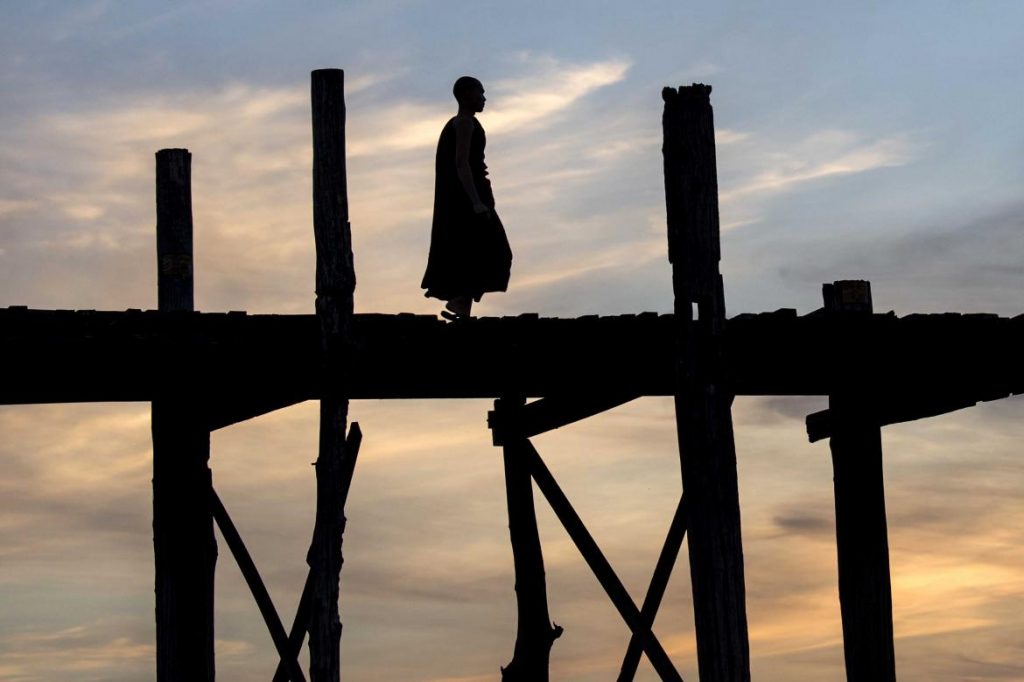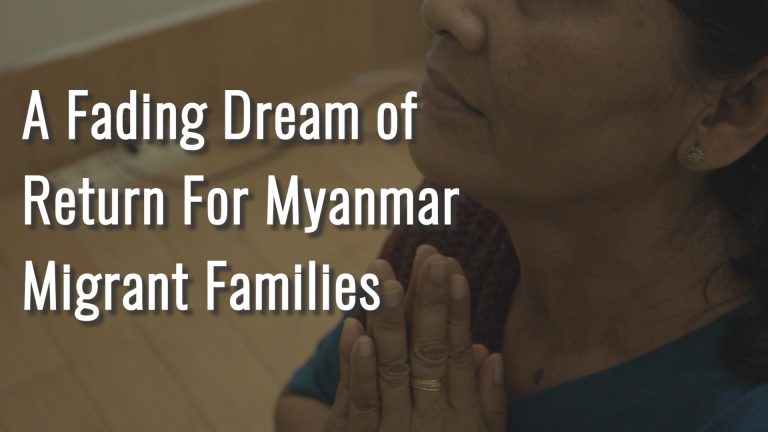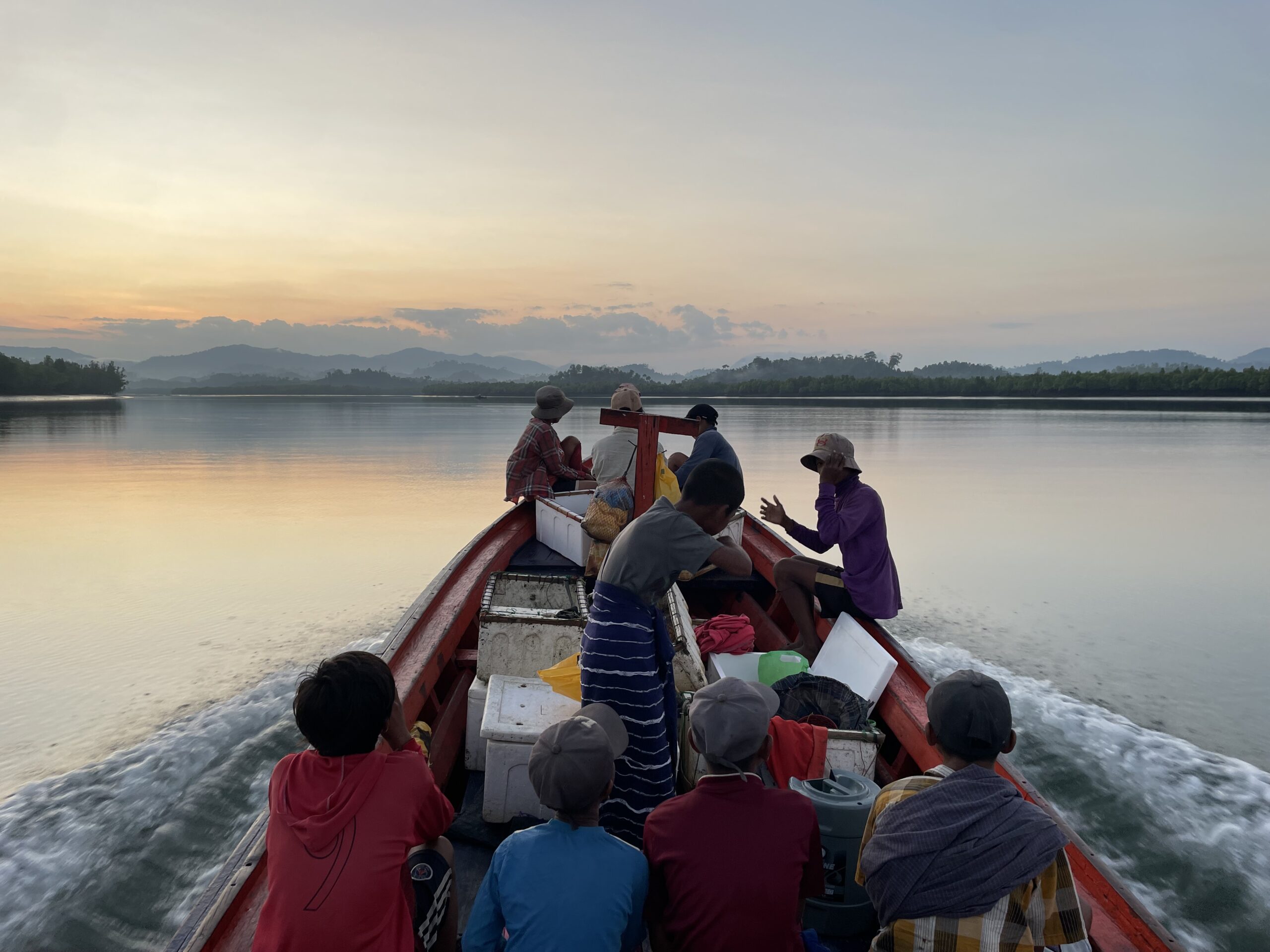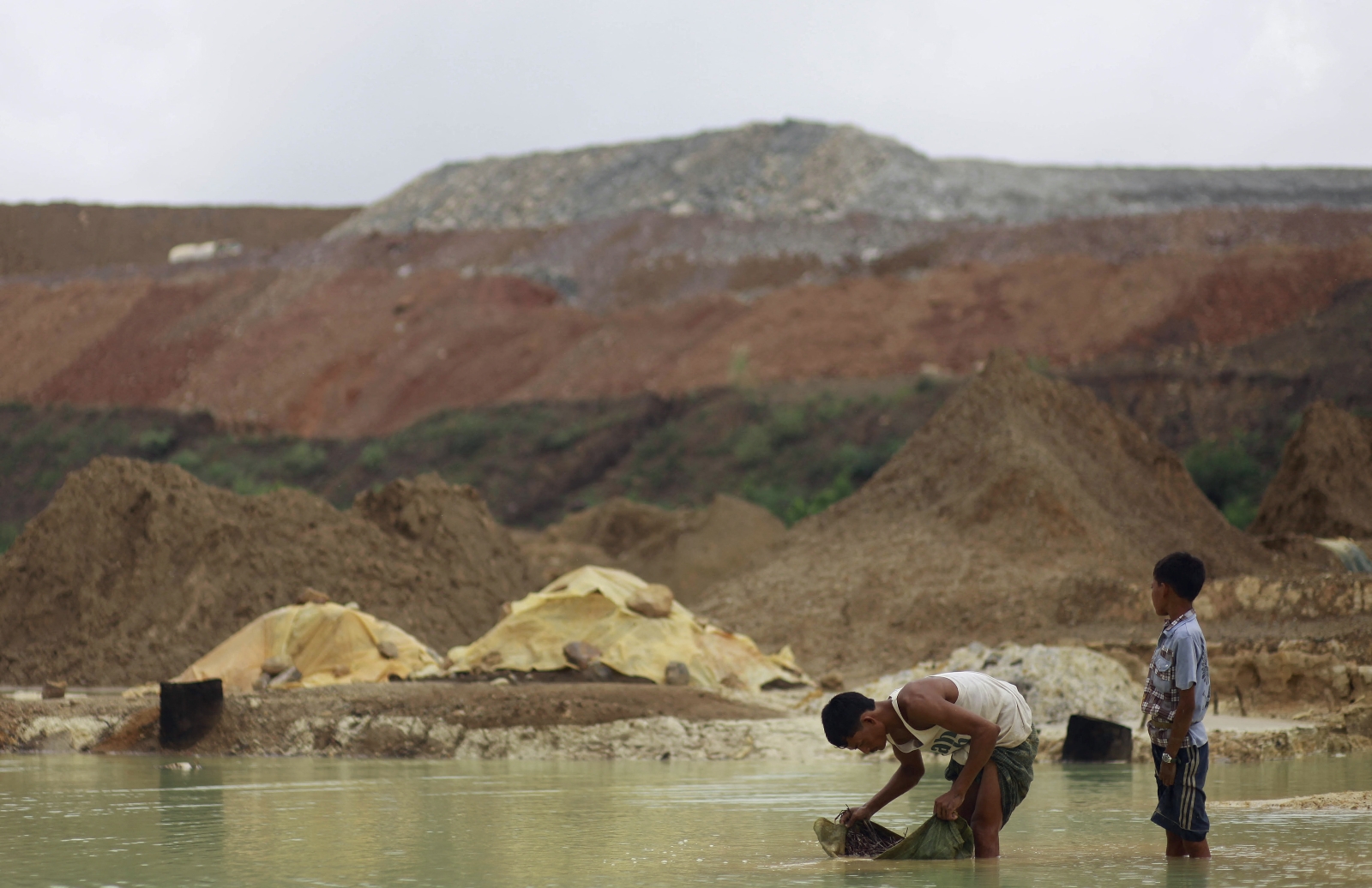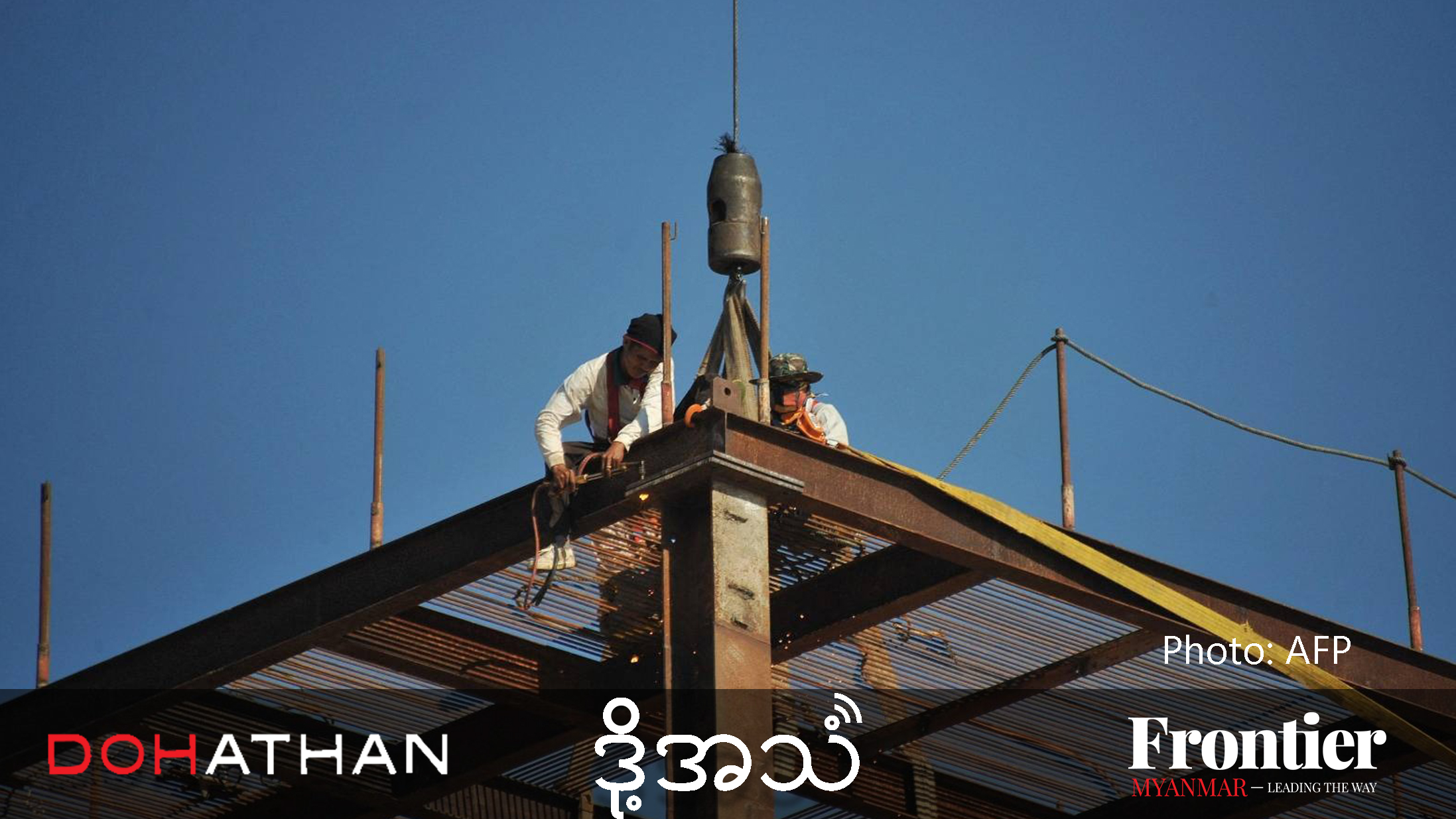A bitter dispute has left languishing in administrative limbo grand plans to restore what some believe is the tomb of a former Thai king interred in 1796.
By JARED DOWNING | FRONTIER
THE CENTURIES-OLD tomb of a Thai king is only a few hundred metres from the foot of U Bein Bridge at Amarapura yet almost no tourists wander over to the tall, bare-brick ruins, or even know that it is the last resting place of a royal.
But maybe their indifference is justified; the king in question may not even be interred there, depending on whom you ask.
In 2013, excavation teams uncovered an urn and concluded that it likely contained the ashes of King Udumbara, or Uthumphon in Thai. He was a reluctant Siamese monarch who gave up the throne and entered the monkhood after ruling the kingdom of Ayutthaya for two months in 1758. Burmese historical records say that Udumbara was among the hundreds of prisoners brought back to Burma by King Hsinbyushin after he sacked Ayutthaya in 1767.
Others were sceptical about the teams’ claims, citing a lack of DNA evidence and going so far as to suggest that it was all a scheme to acquire funding from the Thai crown, which had offered to help with the tomb’s restoration.
Support more independent journalism like this. Sign up to be a Frontier member.
The dispute – a bitter mess of finger-pointing and he-said-she-said – didn’t exactly kill the restoration project, but it did leave the king’s ashes and his would-be tomb in administrative purgatory, complete with wire fencing and “keep off” signs.
When Frontier visited the site in November, its de-facto caretaker, an aspiring historian named U Lin Lin Amara, displayed oversized vinyl photographs showing energetic-looking teams of Thais and Myanmar, plus a few foreigners, digging and dusting. There were also shots of the urn itself, its iridescent glass mosaic little marred by the centuries.

U Mickey Heart, second from left, shows a Thai group what some believe is the tomb of King Udumbara at Lin Zin Khon Cemetery in Amarapura on October 3, 2014. (Teza Hlaing | Frontier)
Five years after the excavations, the crumbling brick pagoda looked like it had been plucked from the plain of Bagan and dumped in a vacant lot, its small stupas melting into weeds and trash. The exception is the one where the supposedly royal ashes had been found, which is protected by a small pavilion.
The story of the quiet, religiously inclined Udumbara becomes hazy after his capture in 1767 and death in 1796 at the newly built royal capital of Amarapura, just south of Mandalay.
Architect U Win Maung led the Myanmar excavation team, and as he tells it, over the centuries Udumbara’s Thai monastery slowly transformed into a cemetery for non-Buddhists, called Lin Zin Kohn. Details of the former king’s death and burial were preserved only in local folklore.
“Thirty years ago I met with an old lady, 85 or 86, and she told me that [pagoda] is the burial place of the Thai king. She did not know his name,” Win Maung said.
The retired architect, who helped design the replica of Mandalay Palace in the 80s, specialises in traditional designs. He spoke while overseeing the construction of a towering standing Buddha image, occasionally pausing to give the foreman advice on the shape of the eyes or the length of the Buddha’s fingers.
He said he had been fixated on the Udumbara story since he first heard it, and couldn’t believe how such a relic could just lie there in plain sight, known to many but never properly excavated.
Then, in 2013, Mandalay City Development Committee unveiled plans to relocate the Lin Zin Kohn cemetery. The decision provided the perfect opportunity for Win Maung and other believers in the Udambara story to try and uncover the truth.
Archaeologists from Myanmar and Thailand excavated the central pagoda and the foundations of what they believed to be Udumbara’s former monastery compound. They uncovered many remains (it was, after all, a cemetery), but one in particular stood out: An urn fashioned from a Thai-style alms bowl and containing fragments of monk’s robes among the ashes.
“The alms bowl is made of terracotta and decorated with colourful glass mosaics, signifying it was used by a Mahathera [high-ranking] monk,” Thai architect Mr Vichit Chinalai, who led the Thai excavation team, told The Nation newspaper. “The glass mosaics are in the dok dua formation, just like the Yethaphan Pwint – the goolar flower in the king’s crest.”
Win Maung also noted that materials used to make the bowl, including a special green glaze, were consistent with the period of Udumbara’s death.
Although there was no DNA evidence to prove whose remains were inside, to him the matter was settled: It was the king.
“The urn is now in a box in [Mandalay] City Hall. You need two keys to open it, and the Thais have one and the Burmese have one,” Win Maung said.
The somewhat unceremonious coffin was meant to be temporary. Amid the swell of academic and political enthusiasm, Win Maung, travel agent U Mickey Heart, his assistant Lin Lin Amara and physician Dr Thin Maung Gyi made plans for a total restoration of the site sponsored by Thailand’s Crown Property Bureau (the body that handles the royal family’s holdings), with oversight from the Myanmar and Thai ministries of culture and the Mandalay City Development Committee.
For Win Maung, it was to be an opus akin to his work at Mandalay Palace: A total make-over with a budget of US$3.23 million to restore the monastery and its grounds as close as possible to its 18th century appearance, including a restoration of the royal cemetery, memorial ground and museum. The king’s remains were to be re-consecrated at his splendid new resting place.
The project quickly fell apart.

In 2013, excavators found an urn inside this crumbling brick stupa and concluded it was the remains of Udumbara. (Teza Hlaing | Frontier)
Thai newspaper The Nation reported in 2014 that the Thai culture ministry withdrew its support because the Myanmar counterpart was slow to verify the historical details of the tomb and the Udumbara story.
Myanmar’s Ministry of Culture insisted that more research was needed, the report said.
“The [Thai] Culture Ministry asked us temporarily to stop all projects related to the excavation and we need the cooperation of the governments of the two countries,” Heart was quoted as saying.
Despite all the archaeological clues, there was always the nagging lack of DNA evidence.
Win Maung’s position on DNA testing of the remains seems to change. He was initially optimistic about testing, but in 2016 he told the Irrawaddy that the test would “take time” because old ashes had been damaged by the elements. Now, he claims that a test is impossible because Udumbara has no direct living decscendent.
His account of the project’s troubles is more personal. According to Win Maung and Lin Lin Amara, Thin Maung Gyi became increasingly frustrated about the use of funds and criticised the Thai team for spending too much on hotels and meals, and for underpaying the Myanmar workers, which he had chosen.
Win Maung began to question the intentions of the project leaders on both sides, and even the claim that the tomb was that of Udumbara. Soon, the project’s most fervent champion became its worst enemy, using his sway with the MCDC to thwart the restorers’ every move.
The project went int abeyance until 2016 when, according to state media, MCDC granted permission for the project, led on the Myanmar side by Win Maung, to move forward – despite the lack of DNA or additional historical evidence.
Yet once again MCDC withdrew support, with U Ye Mon, chairman of the subcommittee that oversaw the matter, citing, once again, the lack of DNA evidence, according to the Irrawaddy News.
Lin Lin Amara continues to pester MCDC, which he says claims that nothing can happen until the Myanmar and Thai governments agree to move forward together. However, he quotes his employer Mickey Heart, who runs his business in Bangkok, as saying everything is ready on the Thai side, including funding from the Crown Property Bureau, and it is just a matter of MCDC giving the green light.
Asked for comment, an MCDC official directed Frontier to its informal consultant on all things Udumbara: Khin Maung Gyi. He declined to speak on the record. An attempt to contact the Thai Crown Properties Bureau was also unsuccessful.
Thus the truth about the lost king, his might-be tomb and what will become of them depends on whom you ask.
For the people living nearby, who burn their trash in the shadow of the old pagoda and whose cattle graze on the compound’s grass, the crumbling column of bricks has always been the tomb of a king of Thailand – even if they don’t know his name.
TOP PHOTO: AFP


